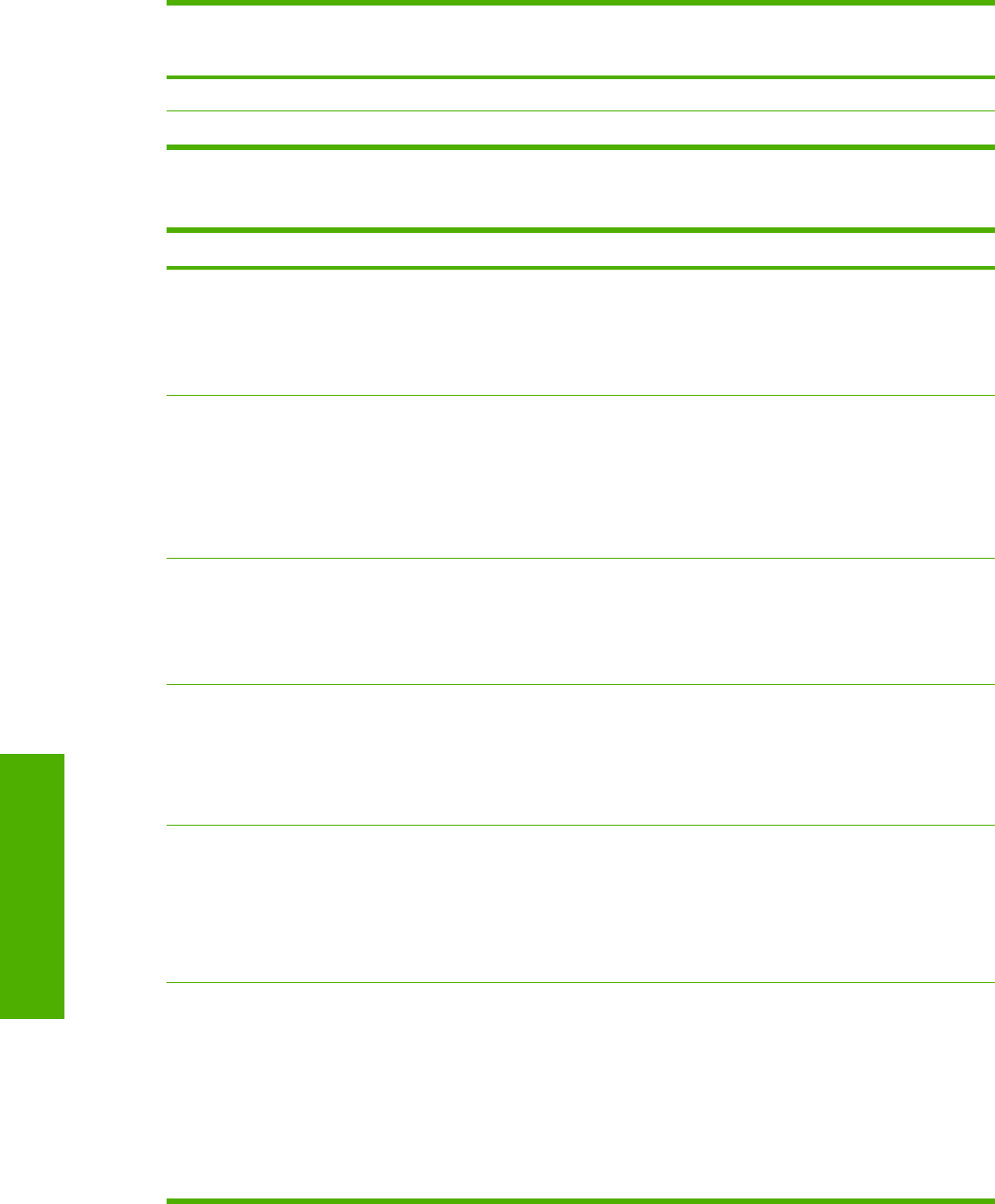
Substrate family Drying
temp.
Curing
temp.
Heating
airflow
Auto-
tracking
Cutter Substrate
-advance
adjust.
Input
tension
Vacuum
level
Paper-Solvent 50 80 30 Yes Yes 0 15 15
HP Photorealistic 50 100 30 Yes Yes 0 15 30
The various settings mentioned above are described below.
Setting Description If too low If too high
Drying temp. The heat applied in the printing
zone removes water and fixes
the image to the substrate.
Print-quality defects such as
banding, bleeding and
coalescence may occur.
Thermal marks may be seen on
the substrate; they may appear
as vertical bands in some colors.
The substrate may wrinkle on the
platen, causing vertical banding,
ink smears or substrate jams.
Curing temp. Curing is needed to coalesce the
latex, creating a polymeric film
which acts as a protective layer,
while at the same time removing
the remaining co-solvents from
the print. Curing is vital to ensure
the durability of the printed
images.
The print may emerge not fully
polymerized, so that the ink
smears when rubbed with a
finger. The print may appear wet,
after printing or later.
The substrate may wrinkle under
the curing module, causing
defects such as bubbles or liner
detachment. The substrate
wrinkles may also cause vertical
banding or ink smears at the
beginning of the following plot.
Heating airflow Airflow helps to remove the
evaporated water from the print
zone and thus allows more
efficient drying.
Print-quality defects such as
banding, bleeding and
coalescence may occur.
The printer may not reach the
expected temperature in the print
zone, causing defects such as
banding, bleeding and
coalescence. Poor text and line
quality may be seen.
Auto-tracking The substrate-advance sensor
(also known as OMAS) is located
under the print platen; it can track
the substrate advance
automatically.
Disable the sensor in the following cases:
●
The substrate is porous and allows ink to pass through to the
platen. Clean the sensor after using this substrate.
●
You are instructed to do so by the front panel, because the
sensor is dirty or unable to track this particular substrate.
Cutter The printer's built-in cutter can
cut the substrate automatically
between each print.
Disable the cutter in the following cases:
●
You want to use the take-up reel.
●
You want to cut the substrate manually.
●
The leading edge of the substrate tends to curl and cause
substrate jams.
Substrate-advance
adjust.
Your printer was calibrated at the
factory to ensure that it advances
the substrate accurately when
using supported substrates in
normal environmental
conditions. However, you may
find it useful to adjust the
substrate advance when printing
on unsupported substrates or in
unusual but stable
environmental conditions.
Dark lines appear when you use
up to six passes. Graininess
appears when you use eight or
more passes.
White lines appear when you use
up to six passes. Graininess
appears when you use eight or
more passes.
34 Chapter 4 Handle the substrate ENWW
Handle the substrate
